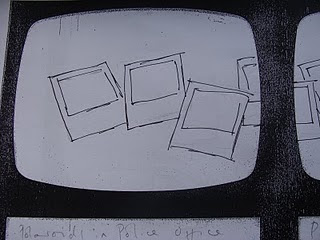Here is our final Thriller opening. Enjoy!
I feel that the music we used worked really well, and it was rather easy to choose after the video had been made. Mainly we looked at the "Donnie Darko" soundtrack, and found that Roland Orzabal's cover version of Tears for Fears' Mad World worked nicely with the opening scene, especially with the line "All around me are familiar faces," to portray that they were all in the killer's year at school.
Feedback
Initially, our police scene was longer, as it had another character being introduced, and given the story in full.
However, when we showed this to people we got comments such as:
"The camera shots you've chosen are good, especially how it's framed in the coffee shop scene"In regard to this, we decided to make the police scene shorter, as it would ensure the audience's attention is kept. Unfortunately, we had to do this by cutting out the third police officer altogether, but I feel it works better.
"I think the police seen is too long. The start and end is good, but the middle bit drags on a little."
"The music works really well. The way it carries on to the detective scene makes them sound more desperate to solve it'
After the re-editing of the video, our feedback was much more positive:
"I really liked it. the sound was really good and the editing was clever. and I think the story is good and I would want to see the rest if it was an actual film"
"I like it.
I think it's really good, the ending's reminiscent of the silence of the lambs
and good editing."
"it's much better now you've cut it down, it keeps my attention for longer. I'd want to see the rest of it"
"It provides an omnipresent feeling of nostalgia by use of musical patterning, angle switches and a general aura of darkness. The ending provides a cliffhanger which can be used in further reference to the final video."































